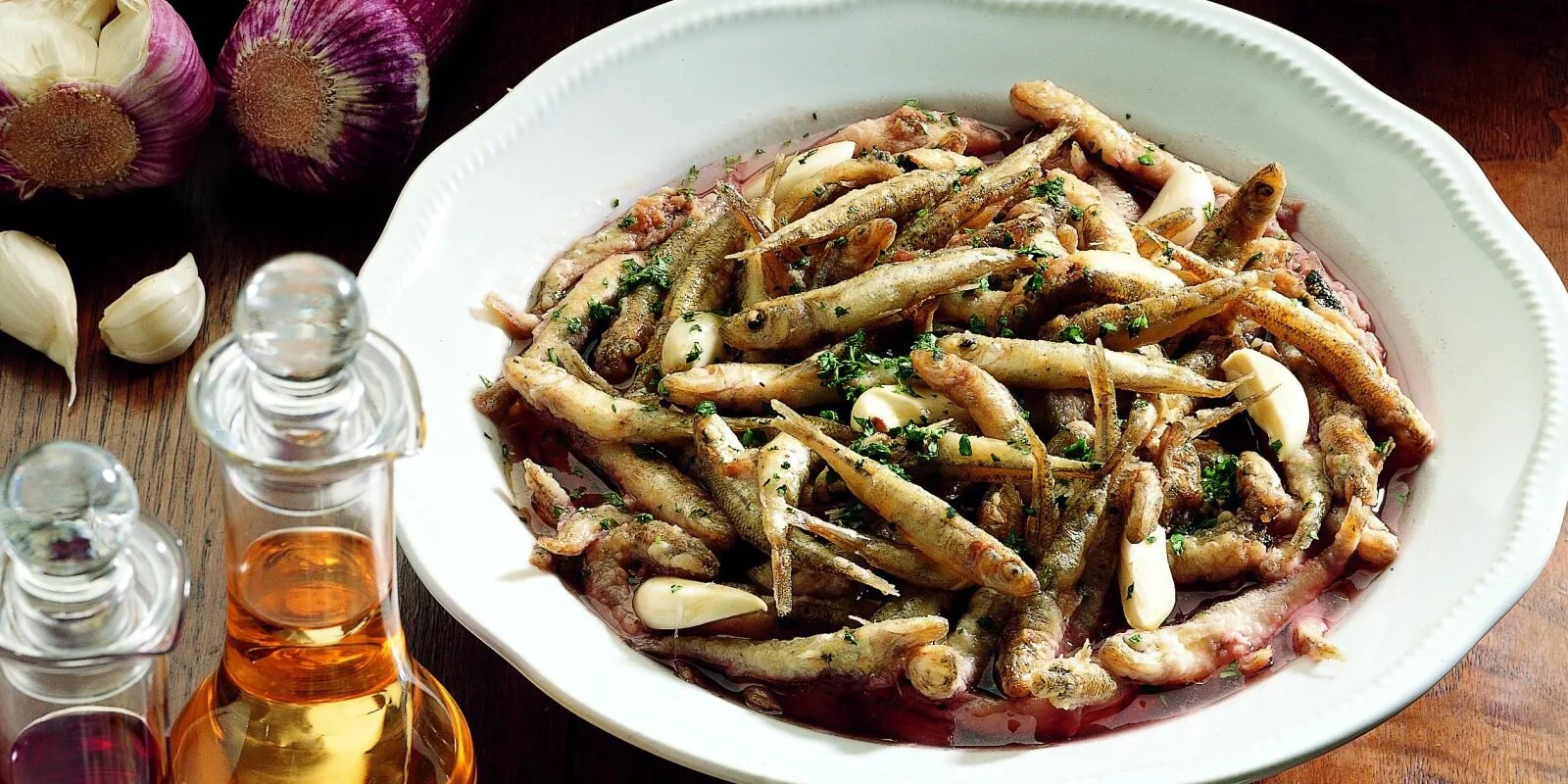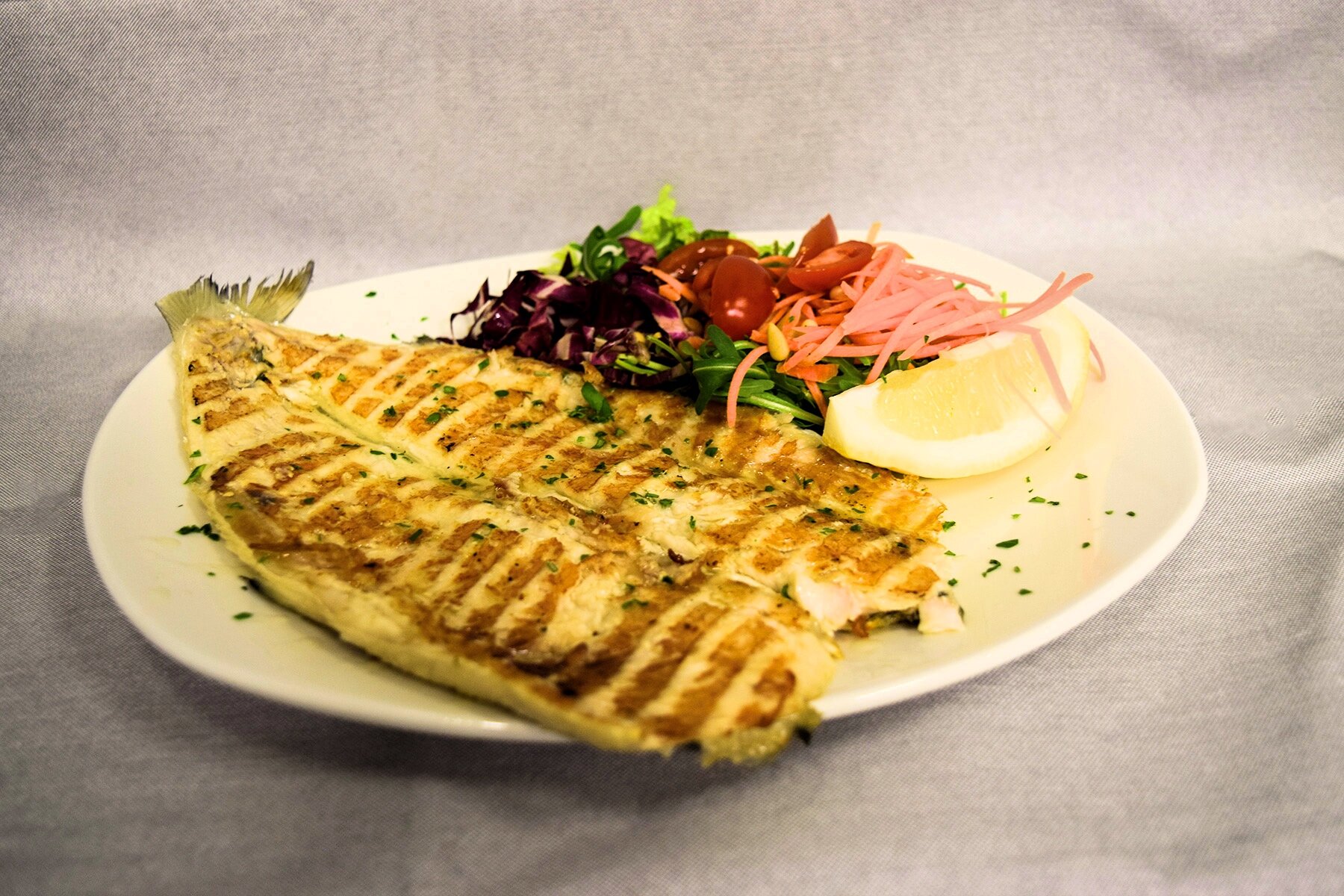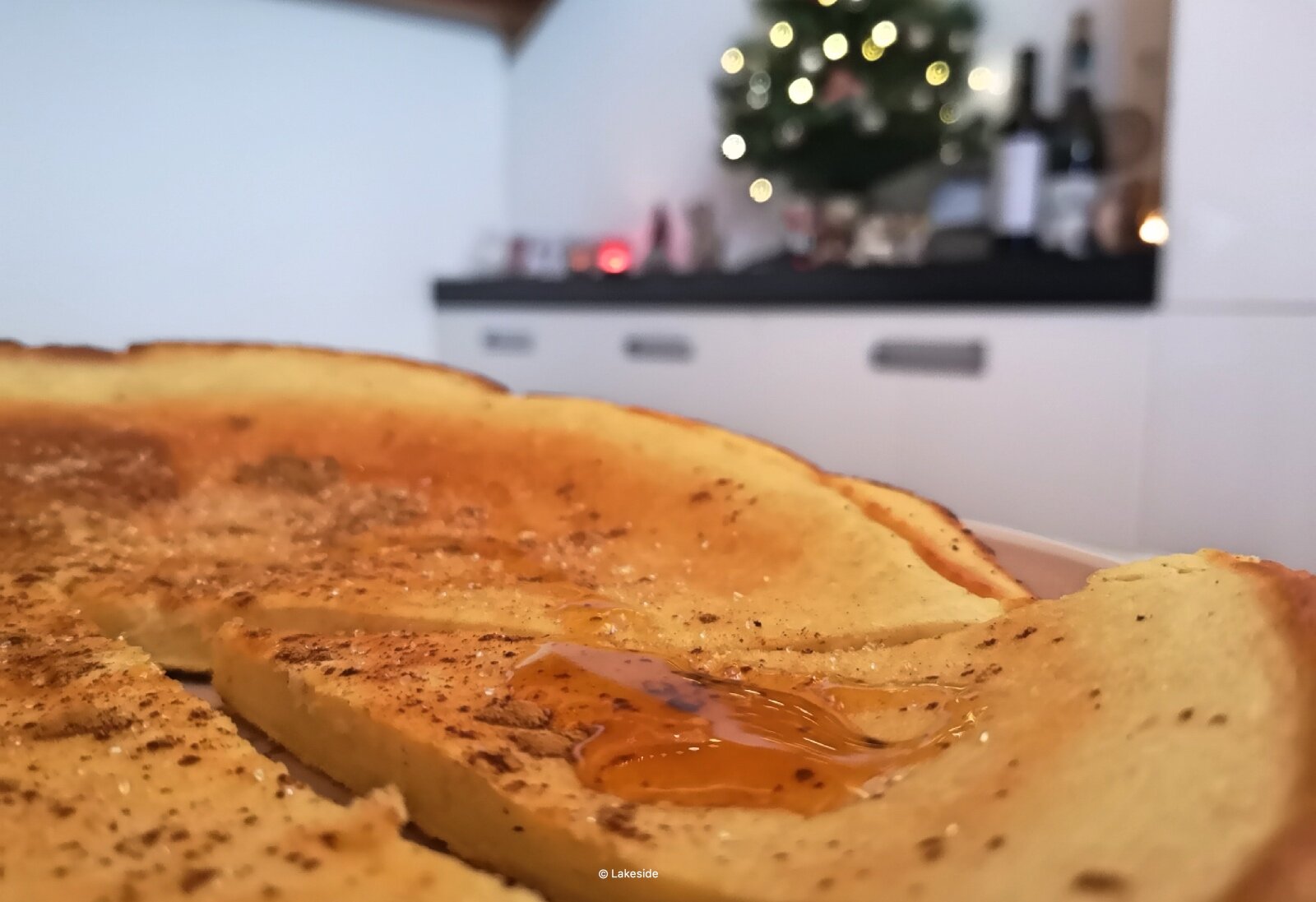Try These Special Dishes of Lake Como: You Won’t Regret
Good news for all the foodies: the culinary symbols of Lake Como are quite a lot.
We made a list of not-to-be-missed dishes that you absolutely have to try during your staying at the lake, otherwise… well, you can’t properly say “I have been to Lake Como”!
A dutiful premise: one of the most characteristic places to sample Lake Como specialties is definitely a crotto. According to centuries-old traditions, these were places created in rocky gorges that were used to keep food products, as they had stable temperatures and natural ventilation that made them ideal for food storage. During the 19th century, many of these private cellars were transformed into inns or small restaurants, open only during Spring and Summer or at the weekend, where you could enjoy simple, wholesome dishes. You can find many of these crotti in the Upper Lake area, as well as in Valtellina: they are like paradises for all those in search of 100% local dishes like lake fish, mountain cheese and, of course, polenta.
If you are in Como city and you want to buy local products, don’t forget to stop by Via Sirtori at the covered market (Mercato Coperto): you’ll find even the rarest products.
A VERY SPECIAL BREAD
Let’s start with the simplest product ever: bread!
Consider that the city of Como has always been famous for the bread, the so called “Pan de Comm”. The most frequently bought one was the “pan gros” or “panatel”, a rounded shape bread.
At the beginning of the 20th century, the bread of Como has been defined the best of Italy for its crunchy crust and the well leavened crumb.
Today you can still try it at Panificio Beretta, the iconic bakery of Como dating back to 1950.
POLENTA, OUR QUEEN
If you are invited to a laghée family on a Sunday lunch, it’s likely that on the table you’ll find the mythological polenta.
Let’s face it: polenta for a local at Lake Como is like a goddess. Somehow, especially for aged people, it’s like bread: “you can eat it with everything”, you’ll hear them saying.
Indeed, there are tons of way us at Lake Como eat polenta.
The key receipt (and the fattiest) is the one of polenta uncia (buttered), that is flavored with alpine cheese, a lot of butter, sage, and (inevitable) garlic. It’s ideal in winter, when it’s cold outside, but also in August in a mountain hut after a long hiking; in other words, it’s always time for a steaming bowl of polenta, regardless of seasons!
Other recipes include polenta with eggs, polenta with boiled potatoes, polenta with Missultin and, in general, polenta as side dish for every meal.
The Toc deserves a special mention: this is a cream obtained by cooking the typical Lombard polenta and adding butter and cheese in good quantity during cooking. Cooking is the most difficult process as it is difficult to obtain the right consistency. The polenta must remain creamy and homogeneous, quite 'solid' to be eaten with the hands but at the same time uniform, so as not to release the melted butter, which would ruin the dish. The Toc derives its name from the way it’s consumed: with the hands (Toc means “piece”). In fact, when the Toc was prepared in the past, the cauldron was placed right in the center of the room and the family, to eat it, had to 'touch' it with their hands. Because of the difficulty of the preparation, even in the same Bellagio - where apparently this dish was born - it is very rare to find restaurants that serve this delicacy. When the Toc is finished and the pot is empty, Ragell is prepared: this is a particular mulled wine which, using the same pot (without washing it!) is enriched with the remains of polenta cream.
FISH, FISH FISH
Image via Ristorante Mella
Lake fish: how can you even think about leaving Lake Como without having tried at least a couple of different types of fishes?
Let’s start with what has been defined as the king fish dish of our lake: the Missultìn.
The one Missultìn is a long story: consider that even Plinio il Giovane (61-113 dc) talked about them in his Epistolarium! A Missultìn is simply a shad (agone) that has been caught in the months of May and June (mainly in the northern waters of the lake, with 200 meters-long nets!), put under salt for 4 days, and sun-dried for 10 days (consider that the shads are particularly perfect for the process of drying, thanks to its rich composition in Omega 3); once the agone gets a red color, it’s conserved for a few weeks under pressure and layered with bay leaves in the so called missolta, a wooden container. They are eaten grilled, sprayed with oil and vinegar, with toasted polenta and red wine.
Another dish you can’t for any reason miss is rice with fried perch: this is another backbone of Lake Como cuisine. The tradition asks to prepare the rice with the fish broth and then add the fried filets of perch, some crispy leaves of sage and a generous amount of melted butter. Ideal if matched with a glass of white Domasino, the special wine of Lake Como!
The one of alborelle is a hot topic among fishers at Lake Como: some years ago there were tons of these fish in the water, but apparently in the last years, because of the introduction on the lake of a bird called Cormorano (who eats especially alborelle), they have almost disappeared. In other words, they have become a quite rare fish. In some restaurants, anyway, you can still eat a fantastic fry of alborelle.
Alborelle in carpione. Image via La Cucina Italiana
Agoni or Lavarelli in carpione: what a delight! If you are fan of the marinade in vinegar, onion and laurel, don’t miss these dishes, ideal as starter.
Image via Farout restaurant
THE ASPARAGUS FROM TREMEZZINA
The asparagus from Rogaro (Tremezzina) is particularly sweet and tender. It’s boiled standing up, with the tips out of the water, and then matched with the eggs “in cereghin” (a local way of saying fried) or with polenta.
You can still taste some specimens in some restaurants or at the festival held in the second half of May, right in Rogaro, in association with the Black Madonna festival that is venerated in the village.
THE “SCIGULITT” FROM BRUNATE
In Brunate, the “scigulitt” (baby onions) are very renowned: delicate, sweet and compact.
Today it’s pretty much impossible to find them at the local markets, but - take notes- if you go to Capolinea Bistrot in Brunate you’ll find the Associatiotion of The Onion of Brunate, with the possibility of buy this special product. The “scigulitt de Brunaa” boast a very intense aroma and they are perfect in dishes based on luganega (sausage) or potatoes.
4 TYPES OF CHEESE NOT TO BE MISSED
Have you ever heard about the Zincarlìn? It’s a typical cheese mainly produced in Valle Intelvi but also in Alto Lario and Alpi Lepontine. It’s a ricotta that has been aged for one year and then spiced with black pepper. The particular flavor is due to the us of both goat and cow milk. Its birth is linked to a recovery practice: during the transhumance, people in the past used to store the surpluses of ricotta; the leftovers were kneaded daily with pepper and sphere-shaped salt, and massaged from time to time to let the eventual serum that had come to be spilled out. Even in our days they can be left to mature in caves, obtaining a light gray mold on the surface, while the inside remains creamy, with a pungent aroma and a strong taste.
Another cheese from Valle Intelvi is the Casoretta del Bisbino: in this area it was used to skim milk to make butter. From the milk that remained from the skimming and from that of a whole milk, came this fabulous cheese. The Casoretta has a cylindrical shape and a semi-hard paste with a slightly savory taste. It’s possible that there is also a small addition of goat's milk which gives the pasta a more particular flavor. Try it with polenta!
The Semuda (aka Scimùt) is a low-fat cheese produced in Dongo and Gravedona (northern lake) from cow milk: it’s probably the less fatty food you’ll find at our lake, but it’s just delightful for a aperitivo! Semuda comes in different colors, from pale yellow to greenish with irregular holes. It’s aged in natural caves or cellars even beyond the year, and there are two variants: a fatty one, produced in the summer months with whole milk, and a corn produced all year round with skimmed milk. The semi-cooked pasta has increasingly evident holes depending on the seasoning.
Image via Latteria Alto Lario
Still talking about cheese, how not to mention the Taleggio Dop? It’s produced on the Lecco branch, in Valsassina (about 40 km from Lecco, an area full of natural caves that are perfect for aging the cheese). It’s stored for 35 days in pine boxes, in cellars, to develop its typical flavor. It’s always made from full-cream milk. Just delicious!
Image via Cora Formaggi
SWEET TEMPTATIONS
Image via Residence Celeste
As to desserts, you can’t forget to try the Miascia (aka Turta del Paisan, in local dialect). This is a cake of ancient origins: it’s made by mixing stale bread, milk, eggs, sugar, butter, apples, pine nuts, raisins and, at discretion, crumbed macaroons, dark chocolate, and lemon zest.
Another member of the family of Lombard sweet breads is the oval cake called Pan Matalòch from Bellagio, once considered the Christmas cake of the Lake. The choice of ingredients is made with the best care available on the market: flour, milk, butter, eggs, walnuts, hazelnuts, almonds, candied fruit and dried figs, in addition to anise, an ingredient that gives its name to Matalòch. The tradition was that the wives had to prepare for their husbands a food that could provide the energy to face an intense day of fishing, and this special cake was perfect for this: today we know it’s very rich in vitamins, proteins, essential fatty acids and mineral salts.
The Paradell is a special dessert made of flour, eggs, milk, sugar and apples, and it’s typical of the Tremezzina area. If you say the word Paradell in front of a local, you’ll probably see his/her eyes shining for the childhood memories: everyone has had a grandmother who used to prepare this very simple dessert for the family.
Paradell with honey
Have you ever tried the Nuvola? The shape resembles that of a large plumcake, while the consistency is something between the panettone and the pandoro but much softer ... just like a cloud! You can eat it year round, you don't have to wait for Christmas! The dough itself is not particularly sweet, but inside there are "sprinkles" of apricot jam that soften it and make it super tasty. Nuvola is a specialty of the Beretta bakery in Como, which has several sales points in the city and province (you can find them all on the official website). The most central location in the city is via Boldoni.
Image via Panifico Beretta
Another typical sweet from Como city is the Resta (from latin “arista”, i.e. fishbone), a loaf decorated with an olive branch. Its name is due to the fact that when you finish eating it, all that remains (‘resta’ in Italian) is just the stalk. An old legend says that the Resta was produced by a clumsy cook who prepared a cake which had risen so much that it spilled out of the tin. He tried to make it go down by poking it with a wooden stick and then folding in the sides of the mixture so that everything would stay inside the tin: the result was that when it was baked it looked a bit like a fish bone (known as resca in dialect). Despite its uncertain origin, the Resta is definitely a kind of panettone linked to Easter time.
From Tremezzina is also the famous Torta Tremezzina, that was invented 54 years ago by Fulvio Cairoli in Portezza. It’s a soft dough on a base of pastry filled with jam; the garnish is composed of almonds and icing sugar. You can buy it exclusively at Pasticceria Tremezzina, in Lenno (Via Rima 2).
Another dessert definitely deserves your attention: Braschino. This is a sweet focaccia, whose recipe comes from Sicily (probably imported by Sicilian migrants in the 1600s.); the name comes from the proximity to the embers (in italian “braci”, in dialect “brasca”). The braschino is a leavened dough based on water, flour, butter and egg yolks, to which are added nuts, raisins and finally sugar mixed with egg white.
Image via Il Gusto del Gusto blog
We end this yummy list with the Rüsümada (dialect name for egg yolk, “rusum”). This is an ancient, energetic drink. The ingredients are just three: eggs, sugar, red wine. The dialectal root of the name refers to the yolk (red) of the egg: rüss d'oof or rüsümm. The Rüsümada in the past was rightly considered a protective against cooling ailments.
Article by Laura Zanotta
Sources: Camera di Commercio di Como, Provincia di Como (Davide Paolini - Il Gastronauta)
Are you planning a trip to Lake Como for your house hunting and you need helpful tips to enjoy the best of the lake?














